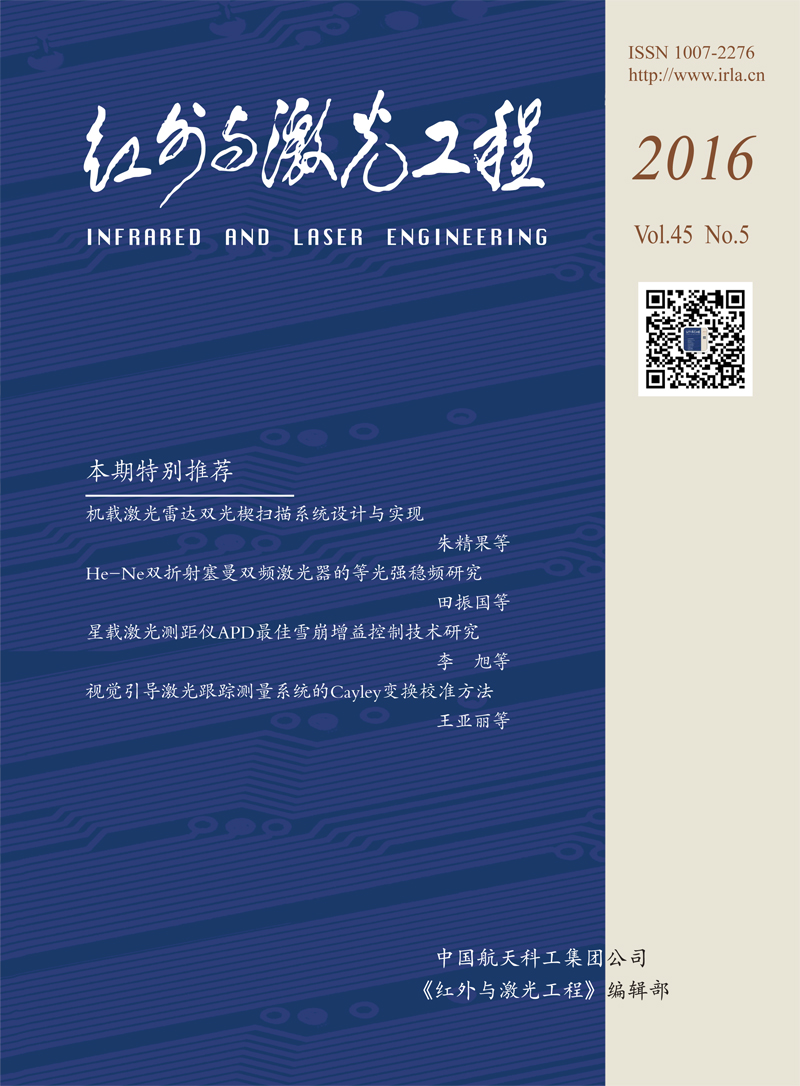|
[1]
|
Lv Hua, Wang Ri. Application of constant false alarm rate of APD in laser imaging system[J]. Infrared and Laser Engineering, 2002, 31(1): 44-47. (in Chinese)吕华, 王日. 雪崩光电二极管恒虚警率控制在激光成像系统中的应用[J]. 红外与激光工程, 2002, 31(1): 44-47. |
|
[2]
|
He Junfeng, Liu Wenqing, Zhang Yujun, et al. Temperature compensation circuit design of laser diode ceilomerer's APD Receiver[J]. Applied Laser, 2011, 31(3): 254-257. (in Chinese)何俊峰, 刘文清, 张玉钧, 等. 半导体激光云高仪接收APD温度补偿电路设计和应用[J]. 应用激光, 2011, 31(3): 254-257. |
|
[3]
|
Frederic Laforce. Low noise optical receiver using Si APD[C]//SPIE, 2009, 7212: 721210. |
|
[4]
|
Zhao Xi, Di Jiajun. One kind applies to DC/DC that the APD opposite direction bias voltage controls shift circuital realization[J]. Journal of Jilin Teachers Institute of Engineering and Technology, 2008, 24(1): 67-68. (in Chinese)赵希, 狄甲军. 一种高性能APD反向偏压控制电路的实现[J]. 吉林工程技术师范学院学报, 2008, 24(1): 67-68. |
|
[5]
|
Huang Genghua, Ouyang Junhua, Shu Rong, et al. Influence of background radiant power on the signal-to-noise ratio of space-borne laser altimeter[J]. Infrared Millim Waves, 2009, 28(1): 58-61. (in Chinese)黄庚华, 欧阳俊华, 舒嵘, 等. 背景辐射功率对星载激光高度计信噪比的影响研究[J]. 红外与毫米波学报, 2009, 28(1): 58-61. |
|
[6]
|
Ouyang Junhua, Huang Genghua, Cheng Pengfei, et al. Study of constant false alarm rate controlling technique based on FPGA in lidar[J]. Infrared Millim Waves, 2009, 28(1):50-53. (in Chinese)欧阳俊华, 黄庚华, 程鹏飞, 等. 基于FPGA的激光雷达恒虚警率控制技术研究[J]. 红外与毫米波学报, 2009, 28(1):50-53. |
|
[7]
|
Zhu Jin, Sun Shijun. Simulation Analysis of spaceborne Laser Altimeter Echo Signal[J]. Spacecraft Recovery Remote Sensing, 2013, 34(1): 67-78. (in Chinese)朱近, 孙世军. 星载激光测距仪回波信号仿真分析[J]. 航天返回与遥感, 2013, 34(1): 67-78. |
|
[8]
|
Wu Nan, Sun Shijun, Li Xu. Space-borne laser full-waveform ranging technology[J]. Spacecraft Recovery Remote Sensing, 2014, 35(3): 68-75. (in Chinese)吴南, 孙世军, 李旭. 星载激光测距仪全波形测距技术[J]. 航天返回与遥感, 2014, 35(3): 68-75. |
|
[9]
|
Rong TaiPing Miao lin. Temperature compensation of APD optimal bias by MAX6605[J]. Huazhong Univ of Sci Tech(Nature Science Edition), 2004, 32(4): 16-18. (in Chinese)容太平, 苗林. 采用MAX6605实现APD最佳偏压温度补偿[J]. 华中科技大学学报(自然科学版), 2004, 32(4): 16-18. |
|
[10]
|
Wang Dong, Zhang Fan, Huang Guangming, et al. The design of the circuit for APD bias control base on FPGA[J]. Nuclear Electronics Detection Technology, 2008, 28(6): 1219-1222. (in Chinese)王东, 张凡, 黄光明, 等. 基于FPGA的光电倍增管APD偏压控制电路设计[J]. 核电子学与探测技术, 2008, 28(6): 1219-1222. |
|
[11]
|
Feng Ying, Zhang He, Zhang Xiangjin, et al. Real time compensation of laser detection system APD[J]. Journal of Nanjing University of Science and Technology(Natural Science), 2010, 34(6): 787-791. (in Chinese)冯颖, 张合, 张祥金, 等. 激光探测系统雪崩管实时补偿研究[J]. 南京理工大学学报(自然科学版), 2010, 34(6): 787-791. |
|
[12]
|
Song Jianhua. Digital control bias circuit of APD with temperature compensation[J]. Optics Optoelectronic Technology, 2013, 11(2): 12-15. (in Chinese)宋建华. 具有温度补偿的APD数控偏压电路[J]. 光学与光电技术, 2013, 11(2): 12-15. |









 DownLoad:
DownLoad: